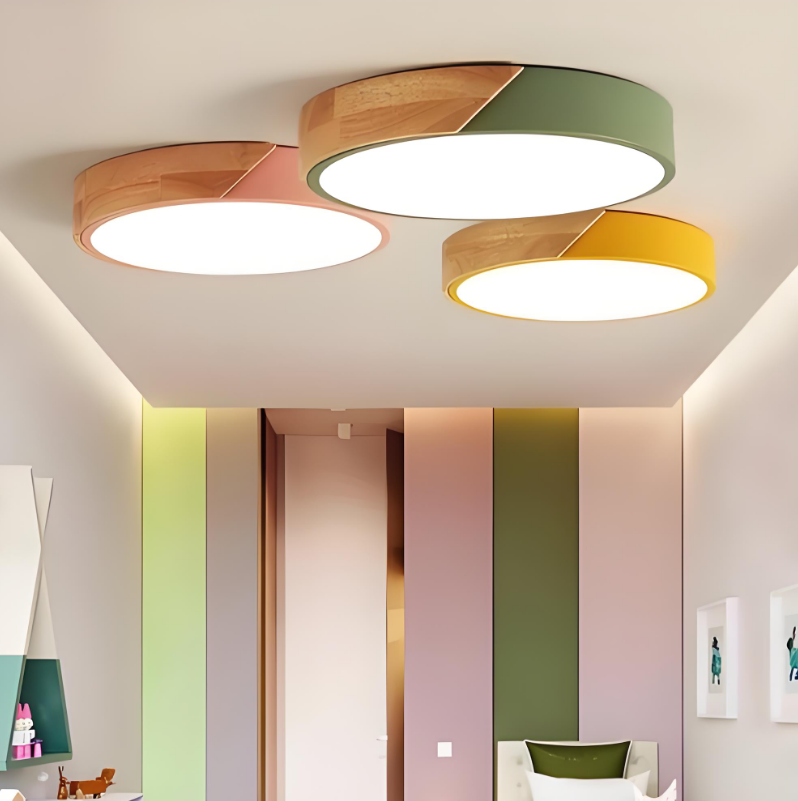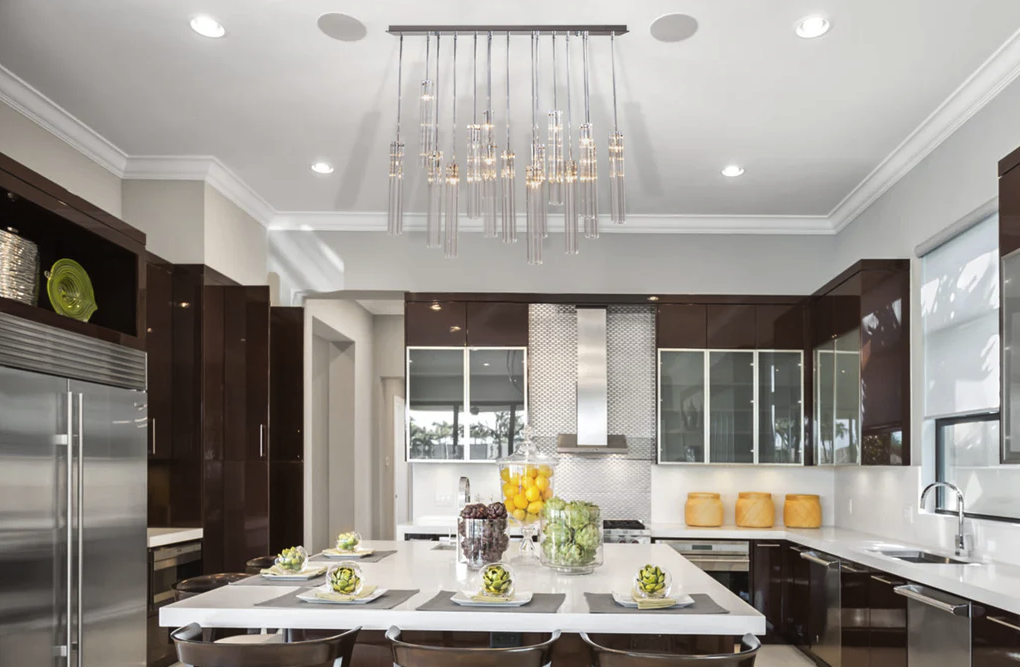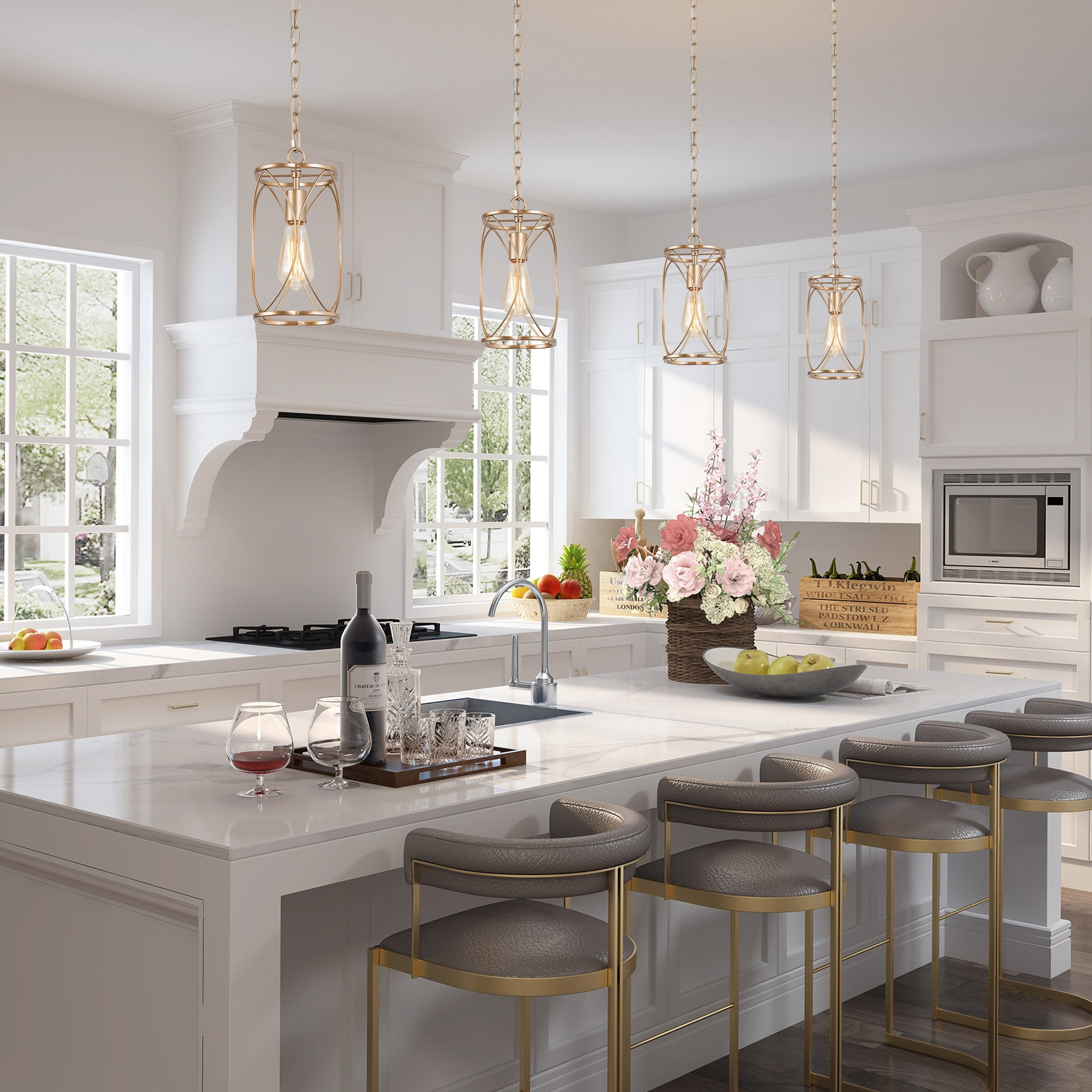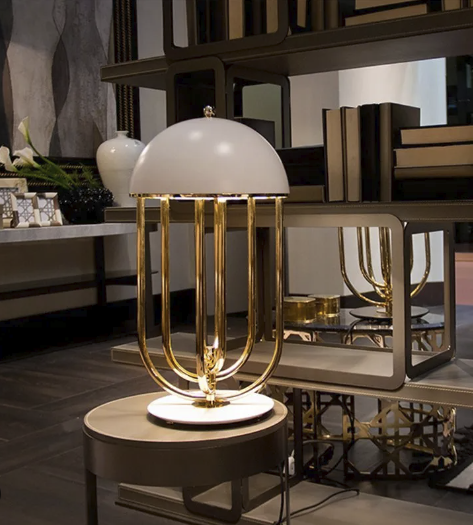Lighting plays a crucial role in interior design, as it has the power to completely transform the look and feel of a space. One of the most important elements of lighting design is the ceiling light. A well-chosen ceiling light can enhance the ambiance of a room, create a focal point, and add a touch of elegance to any space.
Ceiling lights are not just functional fixtures that provide illumination; they are also decorative pieces that can enhance the overall aesthetic of a room. Whether you prefer a sleek and modern look or a more traditional and ornate style, there is a ceiling light out there that will perfectly complement your home’s decor.
Choosing the Right Ceiling Light for Your Home
When selecting a ceiling light for your home, there are several factors to consider. First and foremost, you need to think about the purpose of the light. Are you looking for a fixture that will provide general lighting for the entire room, or do you need something more focused, like a task light for reading or cooking?
Next, consider the size and scale of the room. A small room may be overwhelmed by a large chandelier, while a large room may require multiple fixtures to adequately light the space. It’s important to choose a ceiling light that is proportionate to the size of the room.
Another important consideration is the style of the light. You want to choose a fixture that complements the existing decor of the room. If you have a modern, minimalist aesthetic, you may opt for a sleek and simple flush mount or pendant light. On the other hand, if your home has a more traditional or vintage style, you may prefer a chandelier or semi-flush mount with ornate details.
Types of Ceiling Lights: From Chandeliers to Flush Mounts
There are several different types of ceiling lights ladanmu to choose from, each with its own unique style and functionality. Some of the most popular options include chandeliers, pendant lights, flush mounts, and recessed lights.
Chandeliers are perhaps the most iconic and luxurious type of ceiling light. They are typically made up of multiple arms or branches that hold light bulbs, and they often feature decorative elements like crystals or glass shades. Chandeliers are perfect for adding a touch of elegance and drama to a room, and they work particularly well in dining rooms, entryways, and bedrooms.
Pendant lights are another popular choice for ceiling lighting. They are suspended from the ceiling by a cord or chain, and they come in a wide variety of styles and sizes. Pendant lights can be used as task lighting over a kitchen island or dining table, or they can be used as decorative accent pieces in living rooms or bedrooms.
Flush mounts are a great option for rooms with low ceilings, as they sit flush against the ceiling without any hanging elements. They provide general lighting for the entire room and come in a range of styles to suit any decor. Flush mounts are particularly popular in hallways, bathrooms, and bedrooms.
Recessed lights, also known as can lights or downlights, are installed directly into the ceiling and provide a clean and minimalist look. They are often used for general lighting in kitchens, bathrooms, and living rooms. Recessed lights can also be used to highlight specific areas or objects in a room, such as artwork or architectural features.
The Benefits of Installing a Ceiling Light in Your Home
Installing a ceiling light in your home offers several benefits beyond just providing illumination. One of the main advantages is improved visibility and functionality. A well-lit room is easier to navigate and perform tasks in, whether it’s cooking in the kitchen or getting ready in the bathroom. Ceiling lights provide even and consistent lighting throughout the space, eliminating shadows and dark corners.
In addition to improved functionality, ceiling lights also have the power to enhance the mood and atmosphere of a room. The right lighting can create a warm and inviting ambiance, making a space feel cozy and comfortable. On the other hand, bright and cool lighting can create a more energetic and vibrant atmosphere. By choosing the right ceiling light and adjusting the brightness and color temperature, you can easily set the mood in any room.
How to Properly Install a Ceiling Light
Installing a ceiling light may seem like a daunting task, but with the right tools and instructions, it can be a relatively simple DIY project. Here is a step-by-step guide to help you install your new ceiling light:
1. Turn off the power: Before you begin any electrical work, make sure to turn off the power to the circuit you will be working on. Locate the circuit breaker or fuse box and switch off the corresponding breaker or remove the fuse.
2. Remove the old fixture: If you are replacing an existing ceiling light, start by removing the old fixture. This usually involves unscrewing a few screws or nuts that hold the fixture in place. Carefully disconnect any wires and set aside the old fixture.
3. Install the mounting bracket: Most ceiling lights come with a mounting bracket that needs to be installed before attaching the fixture. Follow the manufacturer’s instructions to secure the mounting bracket to the electrical box in the ceiling.
4. Connect the wires: Next, connect the wires from the ceiling to the wires on your new light fixture. Match up the black (hot) wire from the ceiling with the black wire from the fixture, and do the same for the white (neutral) wires. Twist together each pair of wires and secure them with wire nuts.
5. Attach the fixture: Once the wires are connected, carefully lift your new light fixture up to the ceiling and align it with the mounting bracket. Secure it in place using screws or nuts provided with the fixture.
6. Install the light bulbs: Finally, install the light bulbs in your new ceiling light. Make sure to use the correct type and wattage of bulbs recommended by the manufacturer.
It’s important to note that if you are not comfortable working with electricity or if you are unsure about any part of the installation process, it is best to hire a professional electrician to do the job for you. Safety should always be the top priority when working with electrical wiring.
Maintenance and Cleaning Tips for Your Ceiling Light

To keep your ceiling light looking its best and functioning properly, regular maintenance and cleaning are essential. Here are some tips to help you maintain your ceiling light:
1. Dust regularly: Dust can accumulate on your ceiling light over time, dulling its appearance and reducing its brightness. Use a soft cloth or duster to gently remove any dust from the surface of the fixture. Be careful not to apply too much pressure or use abrasive materials that could scratch or damage the finish.
2. Clean glass shades: If your ceiling light has glass shades, they may need occasional cleaning to remove fingerprints, smudges, or dirt. Fill a basin with warm water and a mild dish soap, and gently wash the glass shades using a soft cloth or sponge. Rinse thoroughly with clean water and dry with a soft towel.
3. Check for loose screws: Over time, the screws that hold your ceiling light in place may become loose due to vibrations or movement. Regularly check all screws and tighten them if necessary to ensure that your fixture is securely attached to the ceiling.
4. Replace burnt-out bulbs: If any of the light bulbs in your ceiling light burn out, make sure to replace them promptly. Using a burnt-out bulb can put strain on the other bulbs and reduce their lifespan.
5. Schedule professional maintenance: It’s a good idea to have a professional electrician inspect and maintain your ceiling light on a regular basis. They can check for any potential issues, such as loose wiring or faulty components, and make any necessary repairs or replacements.
Creative Ways to Incorporate Ceiling Lights into Your Decor
Ceiling lights don’t have to be limited to their traditional roles of providing illumination. There are many creative ways to incorporate ceiling lights into your decor to add a touch of personality and style to your space.
One unique way to use ceiling lights is by installing them in unexpected places. For example, instead of using a traditional chandelier in the dining room, you could hang a cluster of pendant lights at different heights for a more modern and eclectic look. In the bedroom, you could install a ceiling light above the bed instead of using bedside lamps for a sleek and minimalist aesthetic.
Another creative idea is to use ceiling lights as art pieces or focal points in a room. Choose a statement-making fixture with an interesting design or unique materials, and let it take center stage in the space. This works particularly well in rooms with high ceilings or open floor plans, where the ceiling light can become a visual anchor for the entire room.
You can also use ceiling lights to create different zones or areas within a larger space. For example, in an open-concept living and dining area, you could use pendant lights over the dining table to define that area and create a sense of separation from the rest of the room. This not only adds visual interest but also helps to create a more functional and organized space.
Using Ceiling Lights to Highlight Your Home’s Best Features
Ceiling lights can be used strategically to draw attention to the best features of your home’s architecture or design. By using lighting to highlight these features, you can create a focal point and add depth and dimension to a room.
For example, if you have a beautiful fireplace or mantel, you can install recessed lights above it to draw attention to that area. This will not only make the fireplace a focal point but also create a warm and inviting atmosphere.
In rooms with high ceilings, you can use a chandelier or pendant light to highlight the height and grandeur of the space. Choose a fixture with long chains or cords that will hang down and emphasize the verticality of the room.
Another way to use ceiling lights to highlight architectural details is by installing them in alcoves or niches. This can be particularly effective in rooms with built-in shelving or display areas. By adding recessed lights or small spotlights in these alcoves, you can draw attention to the objects or artwork on display and create a sense of drama.
Energy-Efficient Options for Your Ceiling Light
In today’s environmentally conscious world, energy efficiency is an important consideration when choosing any type of lighting. Fortunately, there are many energy-efficient options available for ceiling lights that can help you reduce your carbon footprint and save money on your energy bills.
One of the most popular energy-efficient options is LED lighting. LED lights use significantly less energy than traditional incandescent bulbs and have a much longer lifespan. They also produce very little heat, which makes them safer and more comfortable to use.
Another energy-efficient option is compact fluorescent lamps (CFLs). CFLs use about 75% less energy than incandescent bulbs and last up to 10 times longer. They are available in a wide range of shapes and sizes, making them suitable for almost any type of ceiling light fixture.
If you prefer a more traditional look, you can also find energy-efficient options in halogen or xenon bulbs. These bulbs are more efficient than incandescent bulbs but still provide the warm and inviting light that many people prefer.
Final Thoughts: Elevating Your Home’s Style with a Stunning Ceiling Light
Ceiling lights are an essential element of interior design that can completely transform the look and feel of a space. By choosing the right ceiling light for your home, you can enhance the ambiance, improve functionality, and add a touch of elegance to any room.
When selecting a ceiling light, consider factors such as the purpose of the light, the size and scale of the room, and the style of the fixture. There are many different types of ceiling lights to choose from, including chandeliers, pendant lights, flush mounts, and recessed lights, each with its own unique style and functionality.
Installing a ceiling light is a relatively simple DIY project, but it’s important to follow safety precautions and, if necessary, hire a professional electrician. Regular maintenance and cleaning will help keep your ceiling light looking its best and functioning properly.
Ceiling lights can be used creatively to add personality and style to your space. They can also be used strategically to highlight architectural details or create focal points in a room. Finally, there are many energy-efficient options available for ceiling lights that can help you reduce your carbon footprint and save money on your energy bills.
In conclusion, a stunning ceiling light has the power to elevate your home’s style and create a warm and inviting atmosphere. By carefully selecting the right fixture and incorporating it into your decor in creative ways, you can transform any room into a beautiful and functional space that reflects your personal style.





